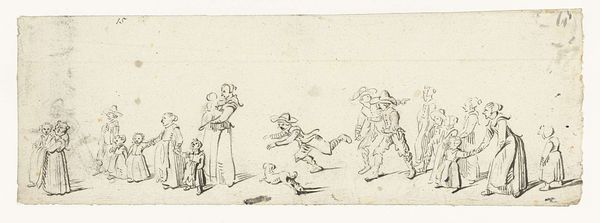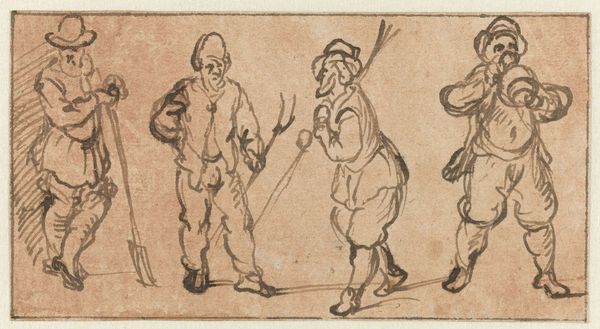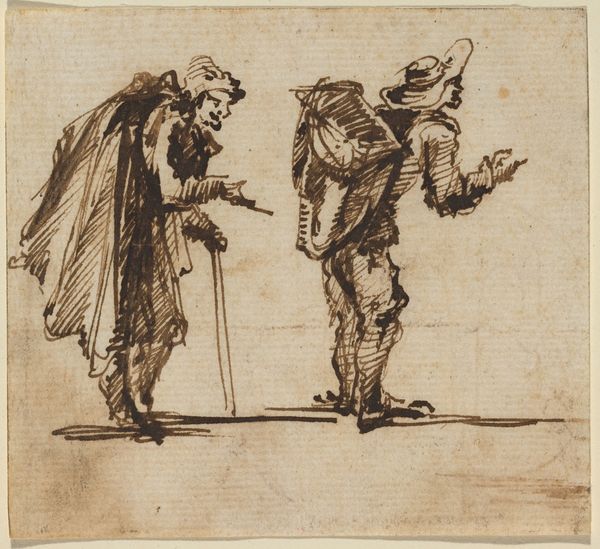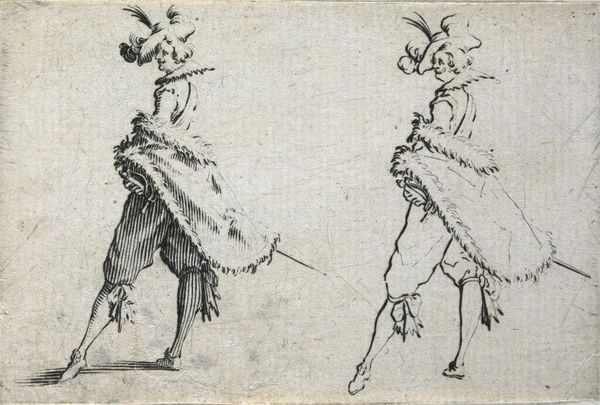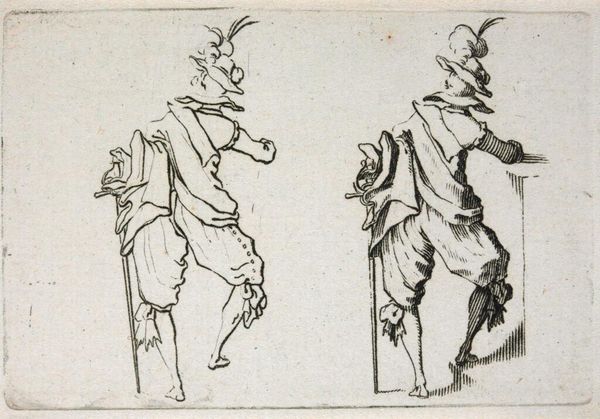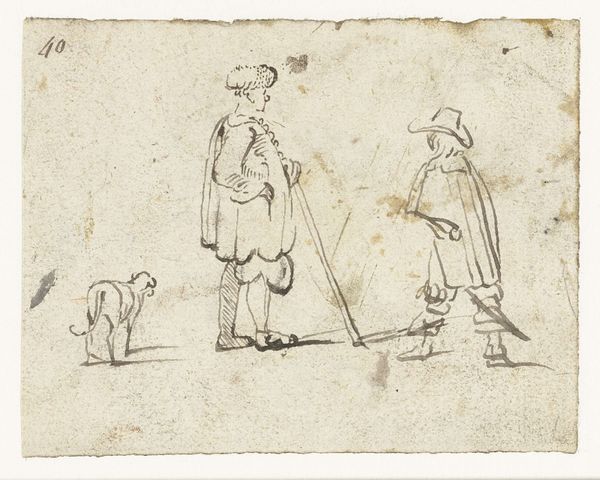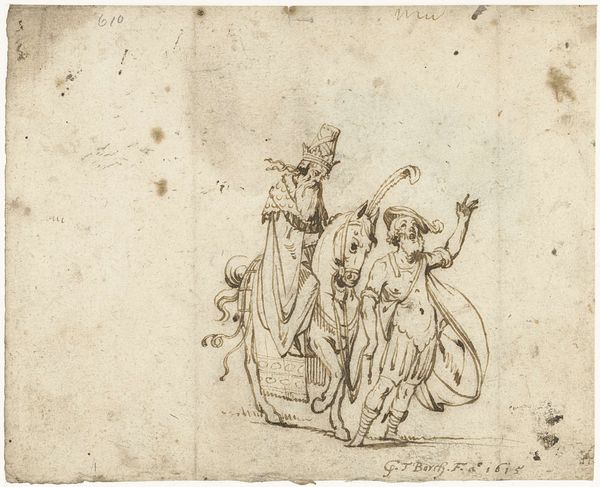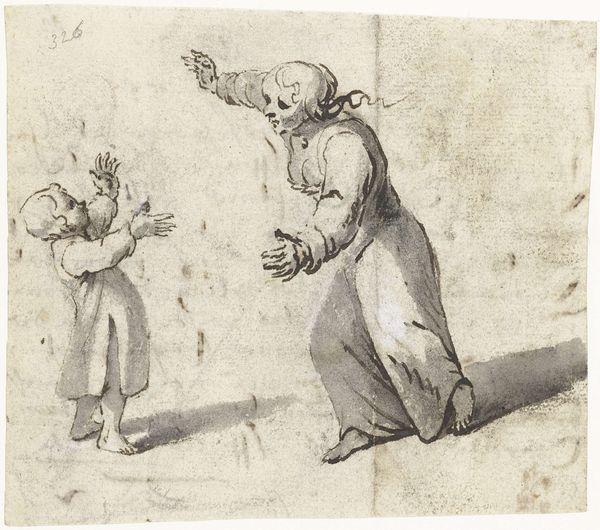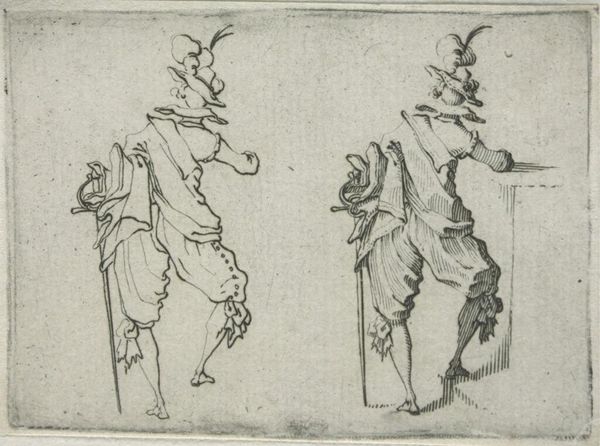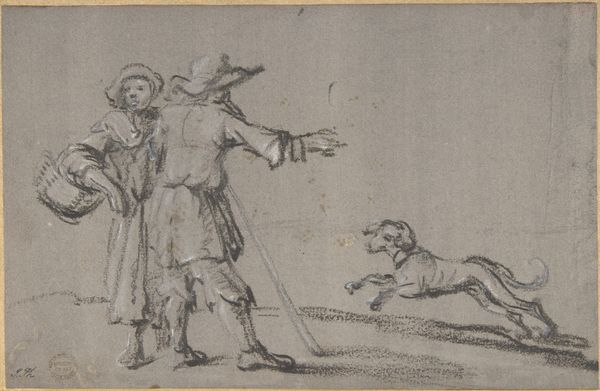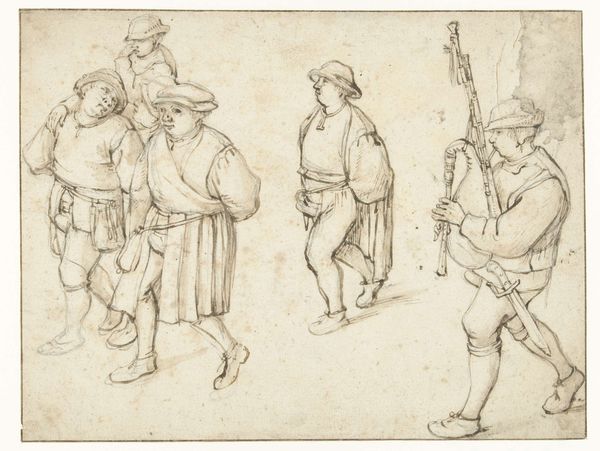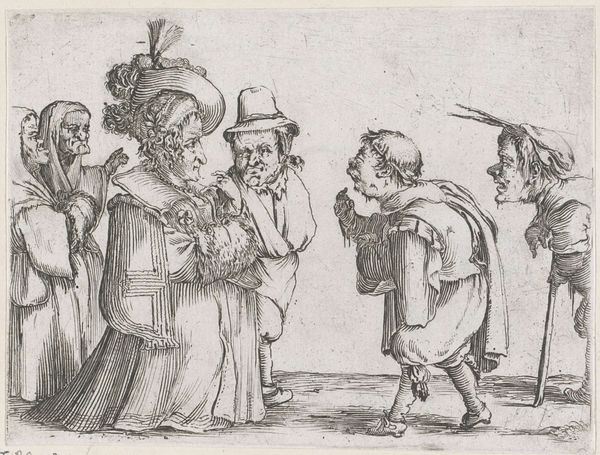
drawing, pencil
#
drawing
#
baroque
#
figuration
#
pencil
#
genre-painting
Dimensions: height 113 mm, width 420 mm
Copyright: Rijks Museum: Open Domain
Curator: Here we have Harmen ter Borch's "Row of nine dancing men and women, seen from the back", a pencil drawing from around 1648. It’s currently housed here at the Rijksmuseum. What are your initial thoughts? Editor: It’s fascinating to see the backs of these figures, as though we are positioned as onlookers to their revelry. The starkness of the pencil emphasizes the bare materiality of this performance. Curator: Exactly. Seeing them from the rear alters the relationship entirely. We’re not invited into the circle, we're observers—perhaps even uninvited ones. This positioning allows us to unpack the performance of gender and social class within this scene. Are these members of the elite class? Note how their attire seems deliberately exaggerated or parodied. Are they attempting a more base form of entertainment or celebration? Editor: It certainly prompts us to question the circumstances of the performance. I’m particularly drawn to the rendering of their clothing; Ter Borch captures a real sense of weight and movement through such delicate lines. He understands the drape and texture of fabrics and the labor involved in creating them. Curator: Yes, there is an undercurrent of performance running throughout. Who is putting on this dance, and for whom? It feels like an act of resistance. What statement are they trying to make by displaying these "commoners" enjoying this folk tradition, almost mimicking and mocking a hierarchical structure. Or is there an act of preservation taking place? Is this performance intended to prevent the slow disappearance of old, well-loved practices. The social implications feel especially present here. Editor: The sketch-like quality reveals process— both the artistic process, and potentially the process of garment construction itself. He has captured all its energy and social meanings with something as basic as graphite on paper. It invites a broader reflection on accessibility in both art production and cultural practice. Curator: A truly egalitarian perspective and one I tend to share. Thinking about who is granted the position of the observer. From which intersectional standpoints does Harmen ter Borch allow us to assess these "dancing men and women." Editor: Thinking about materiality helps strip away assumptions, bringing the act of both creation and performance back down to earth. The earth that ultimately, binds all social groups together.
Comments
No comments
Be the first to comment and join the conversation on the ultimate creative platform.
